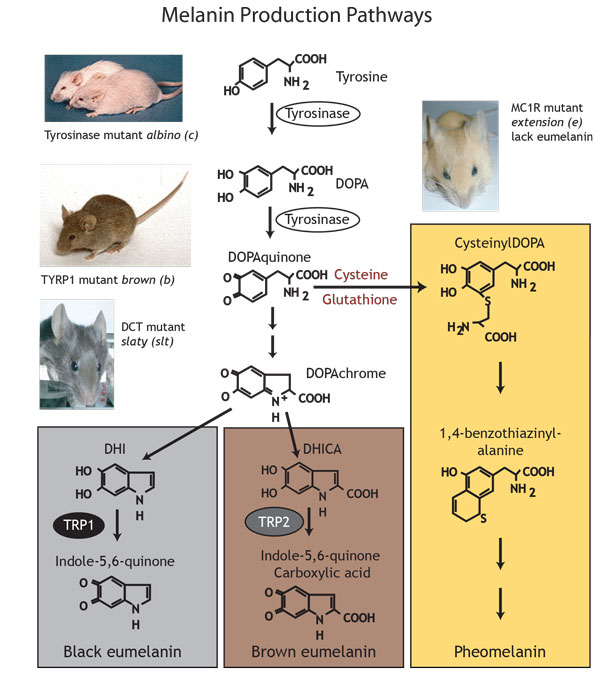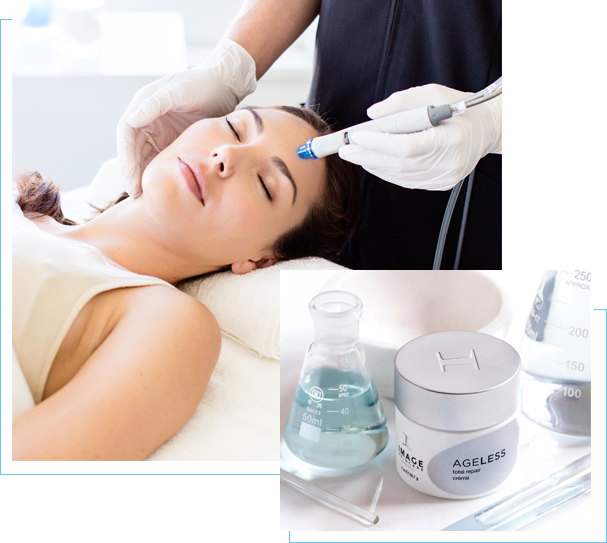
Melanoma In Redheads May Be Genetic
We have known for years that anyone with light colored hair, eyes, and/or freckles is at higher risk for melanoma. But redheads are at especially high risk of melanoma, more than just their light features would suggest. Redheads have about twice the melanoma risk than blondes do, even with the color eyes and tendency to freckle. For decades, there has been speculation that red pigment might be to blame, and a study done last fall shows this to be the case.
What makes a Redhead red?
Our skin and hair color is controlled by the quantity of different pigments that we make. We synthesize pigment from the amino acid tyrosinase and turn it either into yellow-red colored Pheomelanin or else brown or black colored Eumelanin. Several different genes control this, but one main one, MC1R, kind of acts as a switch between making yellow-red vs brown-black. Redheads have mutations in MC1R that make it so that they don’t make any of the brown-black pigments.

Pigment and Melanoma Skin Cancer
Dark colored pigments provide more protection from skin cancer from the sun than light colored pigments.
This is bad for albinos who don’t make any pigment at all. However, albinos (at least human albinos) still have the cells that make pigment, so they can still get melanoma. What is really interesting though is that you’d expect albinos to be at much higher risk of melanoma than redheads, because they don’t have any protective pigment. However, melanoma is rather rare in albinos. Redheads seem to get a lot more melanoma than albinos.
How could having red hair be worse than being albino?
Making red pigment is a Redox nightmare. Meaning, the synthetic pathway from tyrosinase to pheomelanin is a free-radical-generating disaster that puts great oxidative stress on cells. Everyone has heard of antioxidants and their benefits, most of which involves preventing oxidative damage to our DNA which leads to aging and cancer. Making pheomelanin is like an oxidant A-bomb.
So, for years there has been a theory that redheads are at particularly high risk of melanoma, more than albinos and more then blondes because the production of red pigment is itself carcinogenic. If this was true, then redheads do not need sun exposure to be at heightened risk of melanoma AND anything that stimulates red pigment (tanning) is especially damaging.
Making Red pigment is carcinogenic
This hypothesis was tested by the lab that I used to work in during graduate school. A friend of mine, John D’Orazio had made strawberry blonde mice using the genes that give humans red hair. Then, they took mice with a mutant gene called BRAF that is common in human melanoma and cross-bred these mice so that they had regular black mice with the melanoma gene along with strawberry blond mice with the melanoma gene. The expectation was that the redhead mice would get lots more melanomas than the black mice once they put the mice into tanning beds.
The surprise was that 50% of the redhead mice got melanoma even though they never saw the sun (just the fluorescent lights of the lab they were raised in, which emit no UV rays at all). They were able to show that the redhead mice did have much higher levels of oxidative stress in their skin, suggesting that making red pigment was in factor carcinogenic.
To test that idea they cross-bred the redhead mice with albino mice so that they stopped making pigment. These mice also stopped making melanomas showing that the redhead mutation was only carcinogenic if the mice were able to make pigment.
What this means for Redheads
- Redheads are at high risk of melanoma whether or not they go out in the sun
- Going out in the sun will stimulate the production of more red pigment which greatly increases melanoma risk
So, if you have red hair, or if you have redheads in your family and you don’t tan easily and get freckles, there are two things that you ought to be doing to reduce your melanoma risk:
- Get a head to toe skin check every year.
- Always wear sunscreen and take other measures to protect yourself from the sun.
The Los Angeles Times (11/1, Morin) reports that “a study in mice suggests that those among us with ginger hair and fair complexions face an elevated risk of” skin cancer “even when covered up.” The research, “published online Wednesday in the journal Nature, suggests that the same reddish-yellow pigment that gives rise to rusty locks and an inability to tan is itself a potential trigger in the development of melanoma, the deadliest form of skin cancer.”
HealthDay (11/1, Dotinga) reports that “researchers tinkered with the genetic makeup of mice, giving them a mutant form of a gene that boosts the risk of melanoma. None of the mice were exposed to any ultraviolet radiation, to remove the effect of exposure.” The investigators “wanted to see if the added risk differed, depending solely on their fur color.”
MedPage Today (11/1, Smith) reports, “In the absence of UV light, less than a quarter of both the black and the white mice developed melanoma after a year. In contrast, half the red mice had developed cancer by year’s end,” the researchers found. “The key appears to be the gene for the melanocortin 1 receptor, MC1R.”
The Daily Mail (UK) (11/1, Bates) reports that according to researcher Dr David Fisher, “We’ve known for a long time that people with red hair and fair skin have the highest melanoma risk of any skin type. These new findings do not increase that risk but identify a new mechanism to help explain it.”
AFP (11/1) reports, “The study showed “that completely avoiding UV rays would not protect red-haired people from melanoma,” United States cancer researchers Mizuho Fukunaga-Kalabis and Meenhard Herlyn wrote in a comment carried by Nature.”
http://www.ncbi.nlm.nih.gov/pmc/articles/PMC3521494/pdf/nihms423264.pdf



No Comments
Sorry, the comment form is closed at this time.